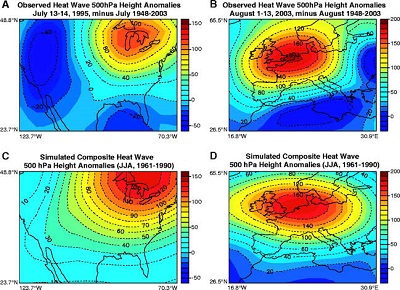Context
In the current century, heatwaves are moving slower and lasting longer than ever before. This phenomenon has been linked to changes in the upper atmosphere’s air circulation patterns, specifically the weakening of the jet stream—a fast, narrow current of air flowing from west to east high up in the troposphere. As a result, the impact of heatwaves has become more severe, affecting regions like India with greater frequency and intensity. This trend is not confined to India but is a global issue, as highlighted by a recent study published in *Science Advances*. The study shows that the dynamics of heatwaves are changing, leading to more prolonged and stagnant periods of extreme heat.
The Effects of Heatwaves
Heatwaves have a profound impact on both human and animal life. They increase the risk of wildfires, damage crops, and pose significant health risks. To understand how these heatwaves have evolved, climate scientist Wei Zhang from Utah State University and his colleagues analyzed global temperatures from 1979 to 2020. Their findings indicate that, on average, heatwaves have slowed down by nearly 8 km/day each decade and have extended in duration by about four days. These changes have been especially pronounced in North America and Eurasia. Additionally, the frequency of heatwaves has risen, from about 75 events between 1979 and 1983 to approximately 98 between 2016 and 2020.
Temperature and Circulation Patterns
Understanding heatwaves involves two key components: thermodynamics and atmospheric dynamics. Rachel White, an atmospheric scientist at the University of British Columbia, explains that thermodynamics pertains to temperature changes—warmer temperatures lead to hotter heatwaves. Dynamics, on the other hand, involve the atmospheric circulation patterns that cause heatwaves. While it is clear that temperatures are rising, there are still questions about how these circulation patterns will change in a warming world.
The Movement of Heatwaves
Previous research has predominantly focused on the frequency and intensity of heatwaves. However, the study by Zhang and his team took a different approach by examining how heatwaves move over space and time. They classified contiguous heatwaves as events with extremely high temperatures, covering more than a million square kilometers, and lasting longer than three days. By tracking these massive blobs of hot air, they aimed to understand their movement—a relatively novel area of study.
Dr. White appreciates this approach, noting that it bridges the gap between the thermodynamic and dynamic aspects of heatwaves. She emphasizes that looking at heatwaves as objects that move and propagate offers a more comprehensive understanding than simply observing temperature changes at a single point.
The Jet Stream’s Role
The study also delved into what causes heatwaves to move so sluggishly. The researchers analyzed upper atmospheric air circulation patterns and found that the jet stream has weakened over the years. The jet stream influences atmospheric waves, which in turn affect the Earth’s surface temperature. A weaker jet stream leads to slower-moving atmospheric waves, resulting in more persistent weather events, including prolonged heatwaves.
To determine the role of human activity in this phenomenon, the researchers conducted simulations using temperature data from 1979 to 2020. They compared scenarios with and without human greenhouse gas emissions and concluded that while natural climate variability and events do influence heatwaves, human activity and greenhouse gas emissions have played a dominant role in making heatwaves slower and longer-lasting.
Further Research and Regional Differences
Dr. White suggests that future research should focus on understanding the role of atmospheric air circulation patterns in heatwave dynamics. Investigating country-specific changes in heatwaves over time could provide more insights. Dr. Zhang and his team plan to explore regional differences in heatwave behavior as part of their next steps, aiming to develop better climate adaptation strategies.
Mitigation Strategies
In urban areas, increasing green infrastructure and planting more trees can help mitigate the effects of heatwaves. Dr. Zhang has been actively involved in such efforts, collaborating with Tree Utah, an NGO, to engage communities in planting and caring for trees. He also teaches a class on Climate Adaptation Science at Utah State University, where students learn and apply climate adaptation strategies, including working with farmers on alternative crops.
Conclusion
The study conducted by Dr. Zhang and his colleagues adds to the growing body of evidence that climate change is altering extreme weather events. It highlights how the behavior of heatwaves is changing, with significant implications for daily life, health, and the environment. As heatwaves become more frequent, slower-moving, and longer-lasting, understanding and adapting to these changes is crucial for mitigating their impact. This research underscores the importance of addressing both the thermodynamic and dynamic aspects of climate change to develop effective adaptation and mitigation strategies.
|
Probable Questions for UPSC Mains Exam
|
Source - The Hindu







